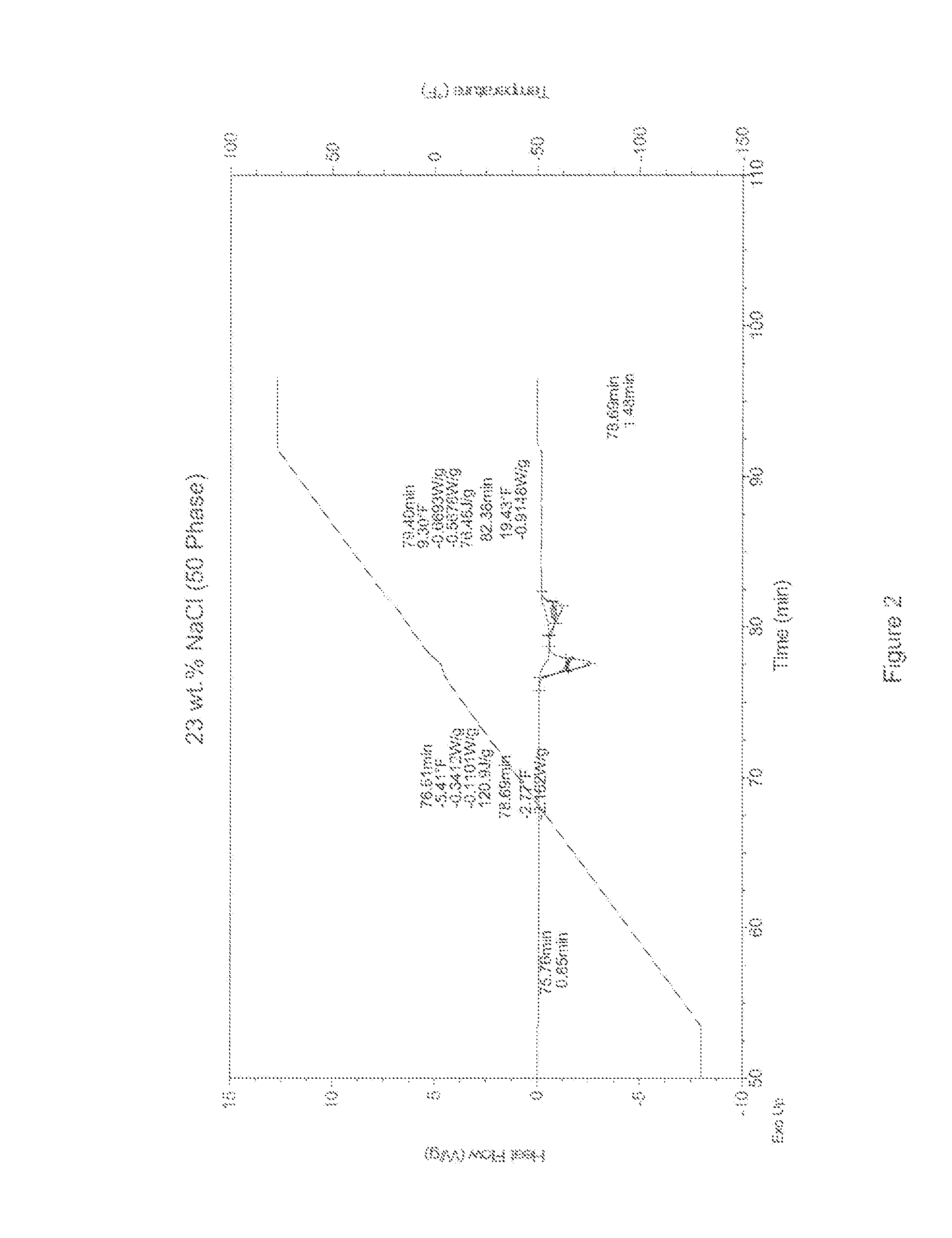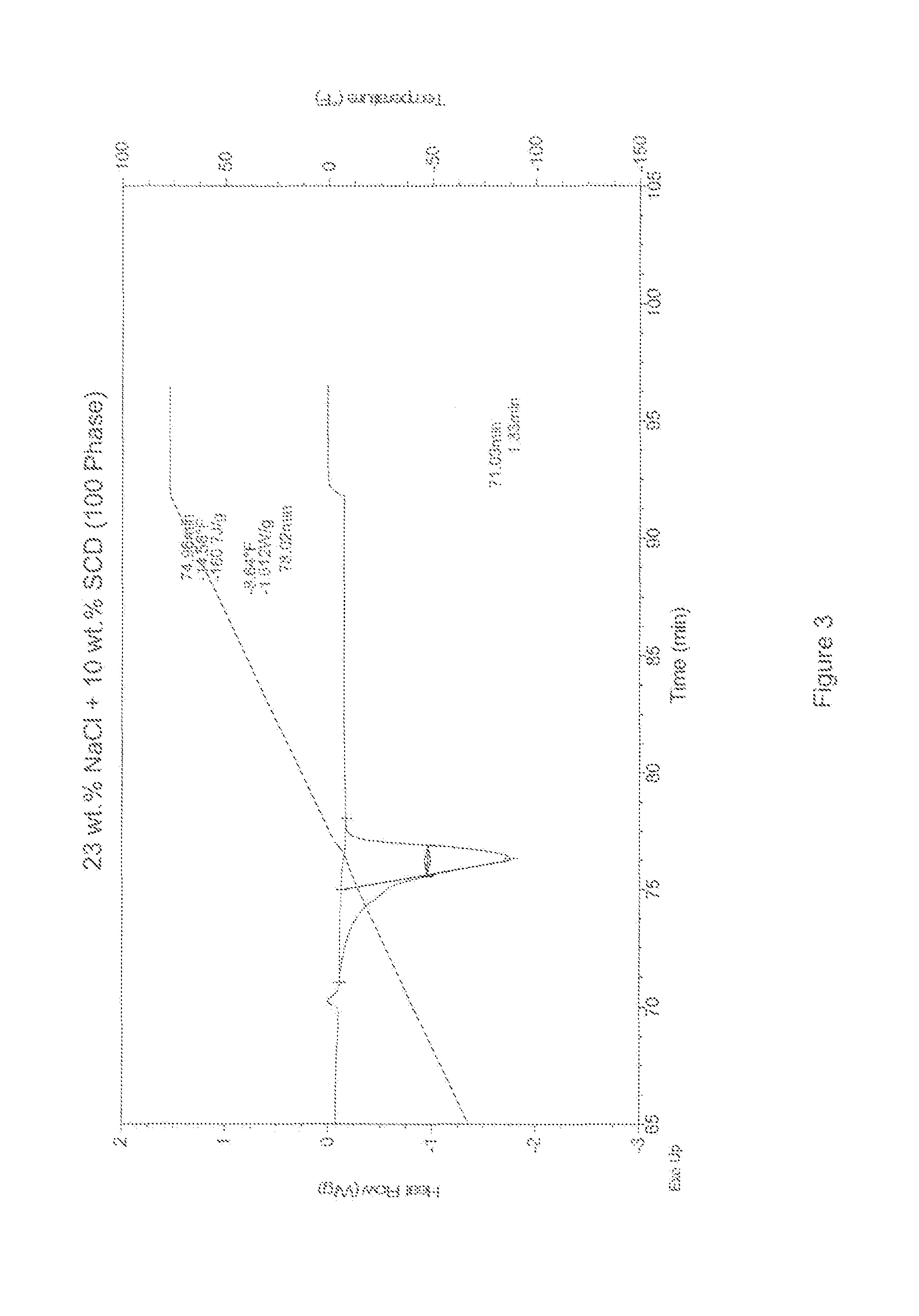Citrate containing deicing compositions with improved eutectic temperatures
a technology of citrate and deicing composition, which is applied in the direction of chemistry apparatus and processes, and other chemical processes, can solve the problems of reducing the effectiveness of sodium chloride brine in breaking up, requiring frequent reapplication, and significant vehicle damage, so as to reduce the amount of ice formed on the surface and lower the eutectic temperature of the solution
- Summary
- Abstract
- Description
- Claims
- Application Information
AI Technical Summary
Benefits of technology
Problems solved by technology
Method used
Image
Examples
Embodiment Construction
[0021]Differential Scanning calorimetry (DSC) measurements were taken to determine the melting / freezing points of aqueous samples with varying concentrations of a freezing point depressant. The freezing point depressants sampled here included (1) pure sodium chloride (NaCl) and (2) mixtures of sodium chloride and sodium citrate dihydrate (SCD). Comparative DSC measurements on pure water ice were also performed to establish a baseline for the efficacy of the freezing point depressants at lowering the melting / freezing points of ice. The DSC scans are shown in FIGS. 1-6, and the results of the DSC measurements are listed below in Tables 1-3.
[0022]
TABLE 1100 Phase DSC MeasurementsTime in Minutes° F.SampleTime 1Time 2Time 2 − Time 1Temp 1Temp 2Temp 2 − Temp 1Energy J / g23% NaCl76.5880.203.62−5.53−0.455.08−231.423% NaCl + 1% SCD75.6878.282.60−10.63−5.585.05−211.423% NaCl + 2% SCD75.5378.032.50−11.53−6.495.04−201.323% NaCl + 3% SCD75.4578.132.68−11.93−6.595.34−194.223% NaCl + 4% SCD75.3577....
PUM
| Property | Measurement | Unit |
|---|---|---|
| freezing point | aaaaa | aaaaa |
| temperatures | aaaaa | aaaaa |
| eutectic temperature | aaaaa | aaaaa |
Abstract
Description
Claims
Application Information
 Login to View More
Login to View More - R&D
- Intellectual Property
- Life Sciences
- Materials
- Tech Scout
- Unparalleled Data Quality
- Higher Quality Content
- 60% Fewer Hallucinations
Browse by: Latest US Patents, China's latest patents, Technical Efficacy Thesaurus, Application Domain, Technology Topic, Popular Technical Reports.
© 2025 PatSnap. All rights reserved.Legal|Privacy policy|Modern Slavery Act Transparency Statement|Sitemap|About US| Contact US: help@patsnap.com



